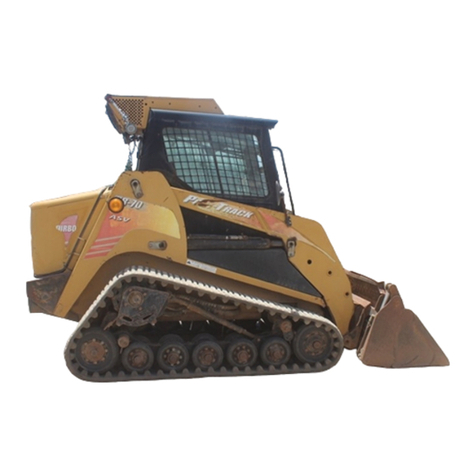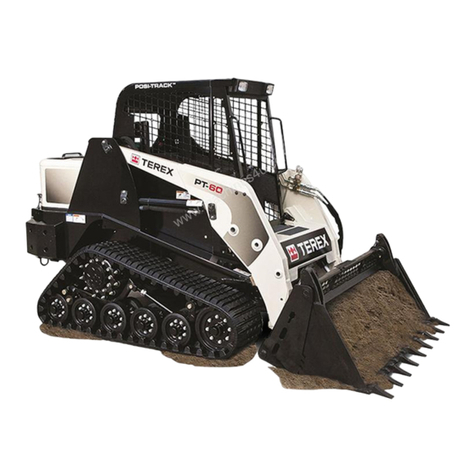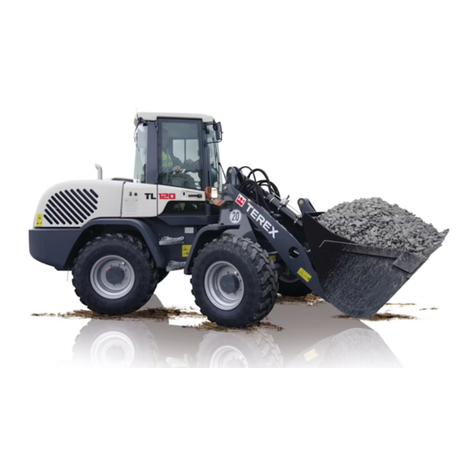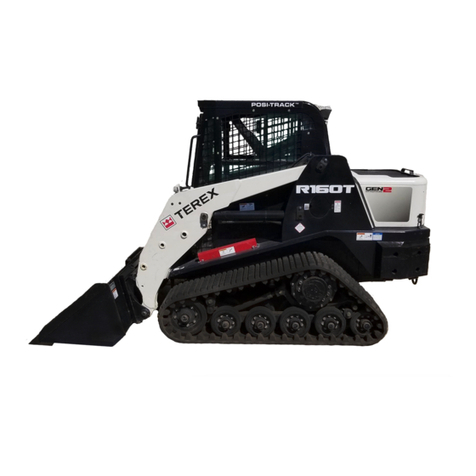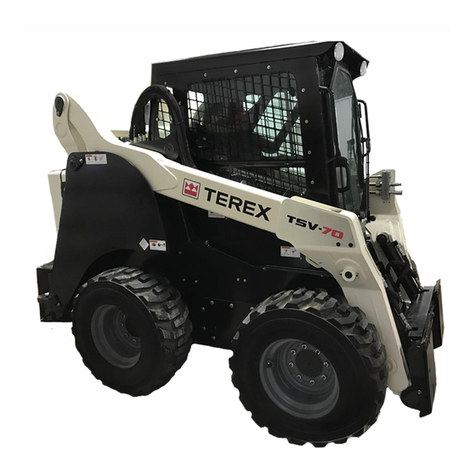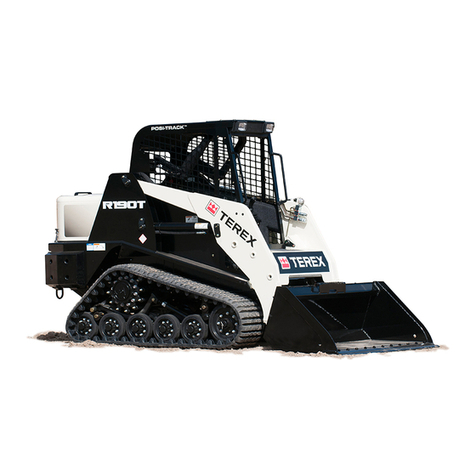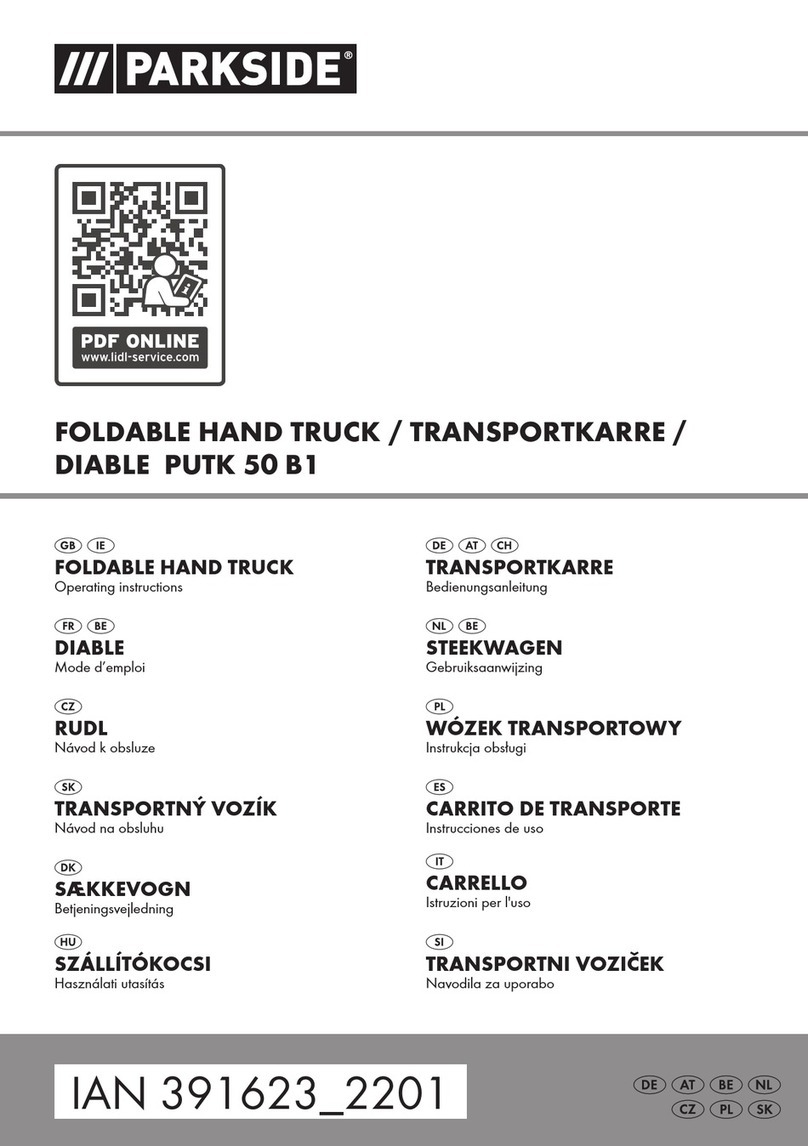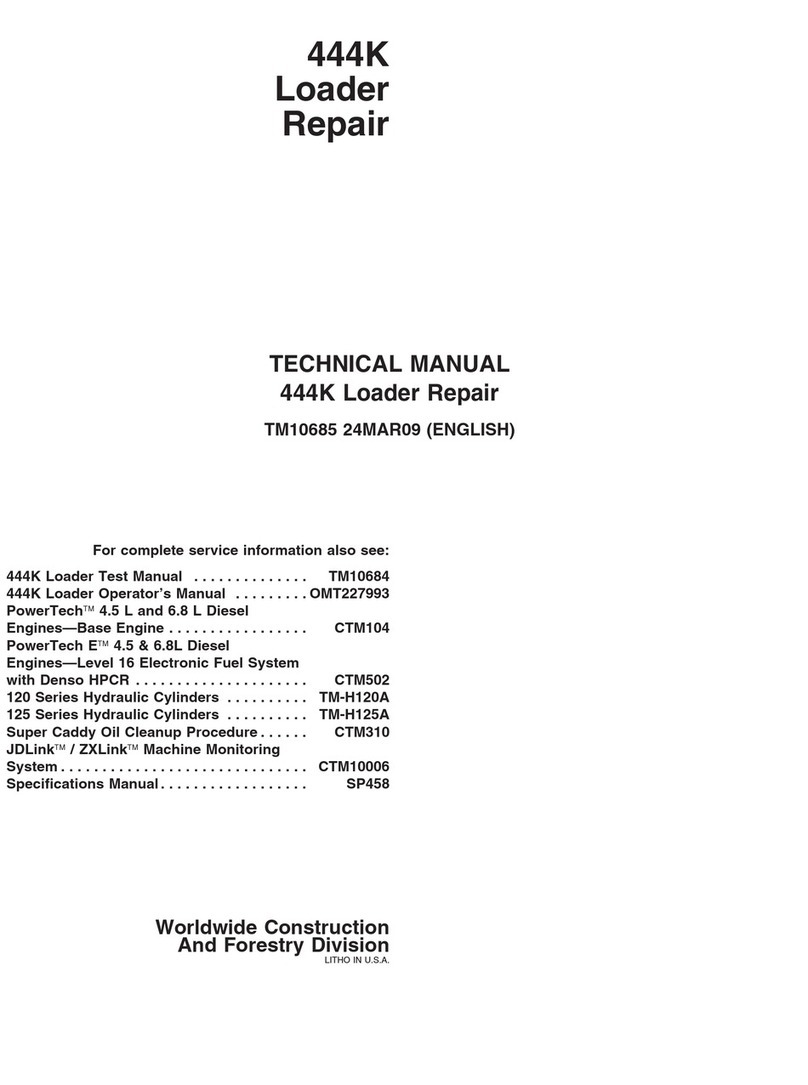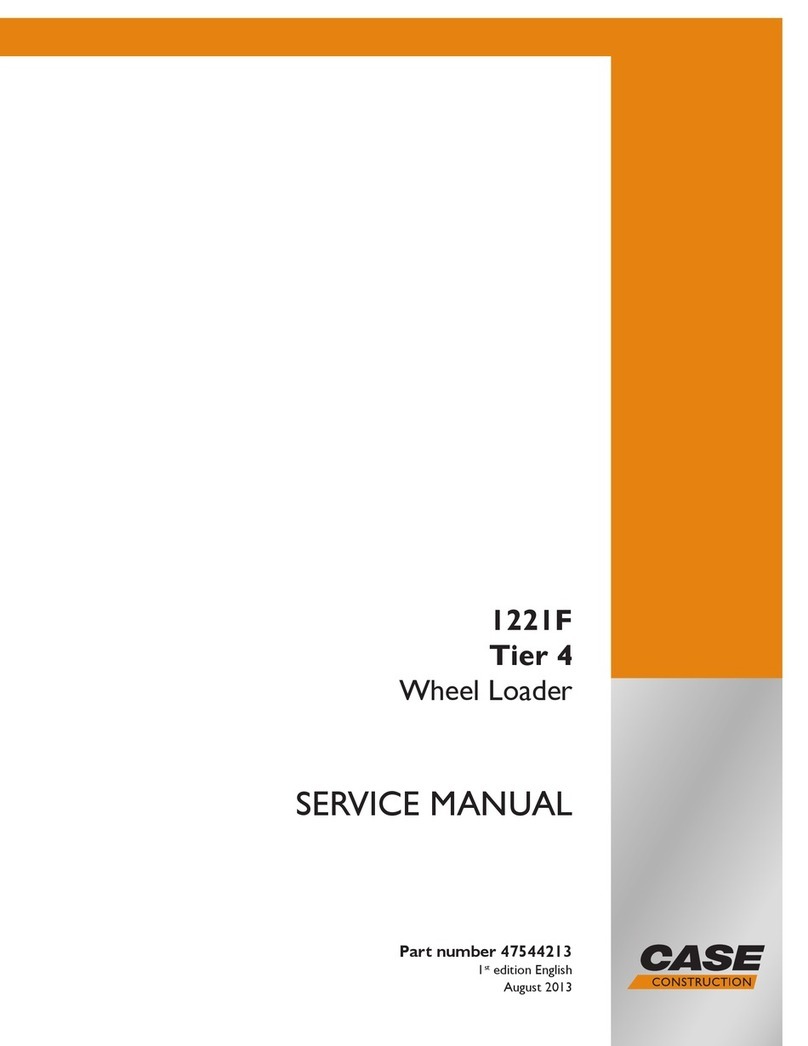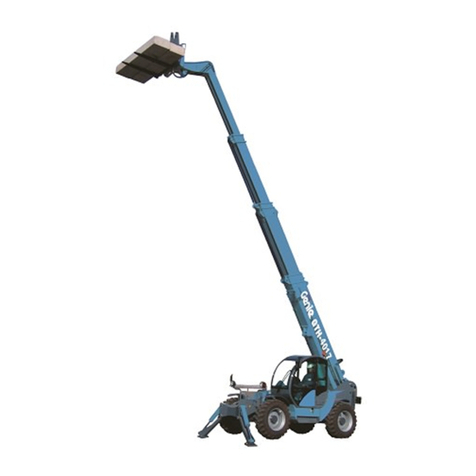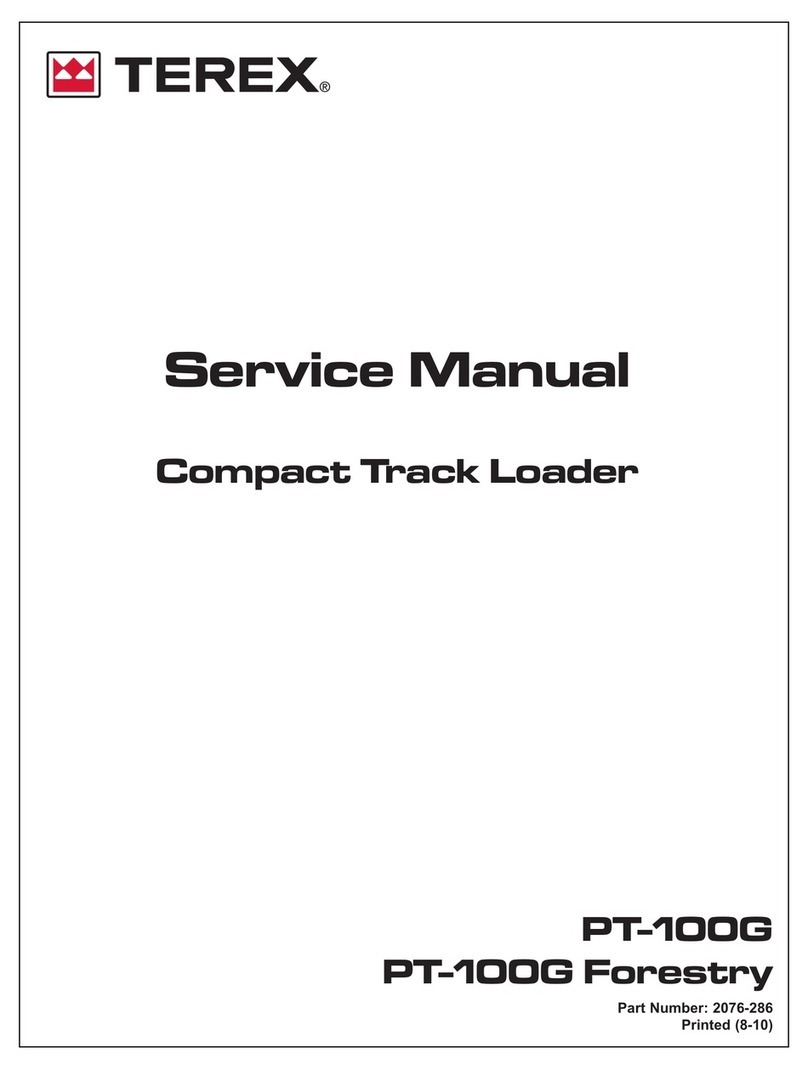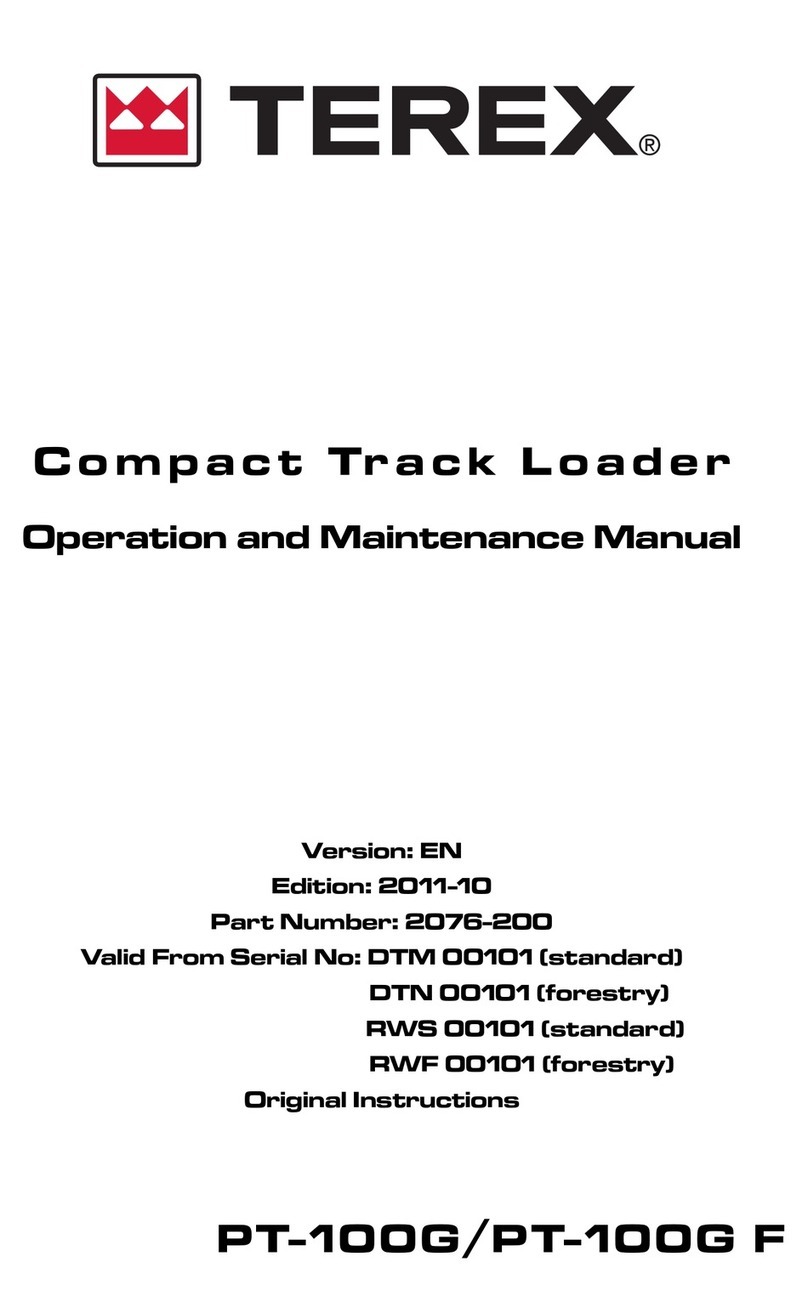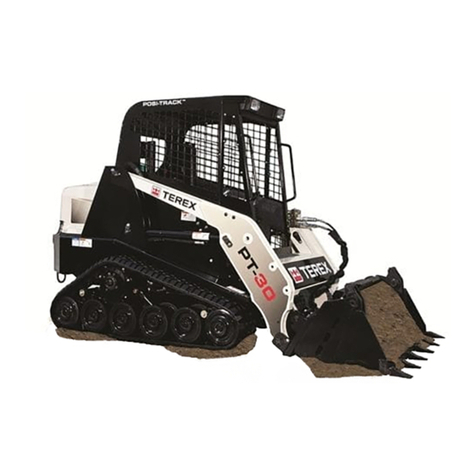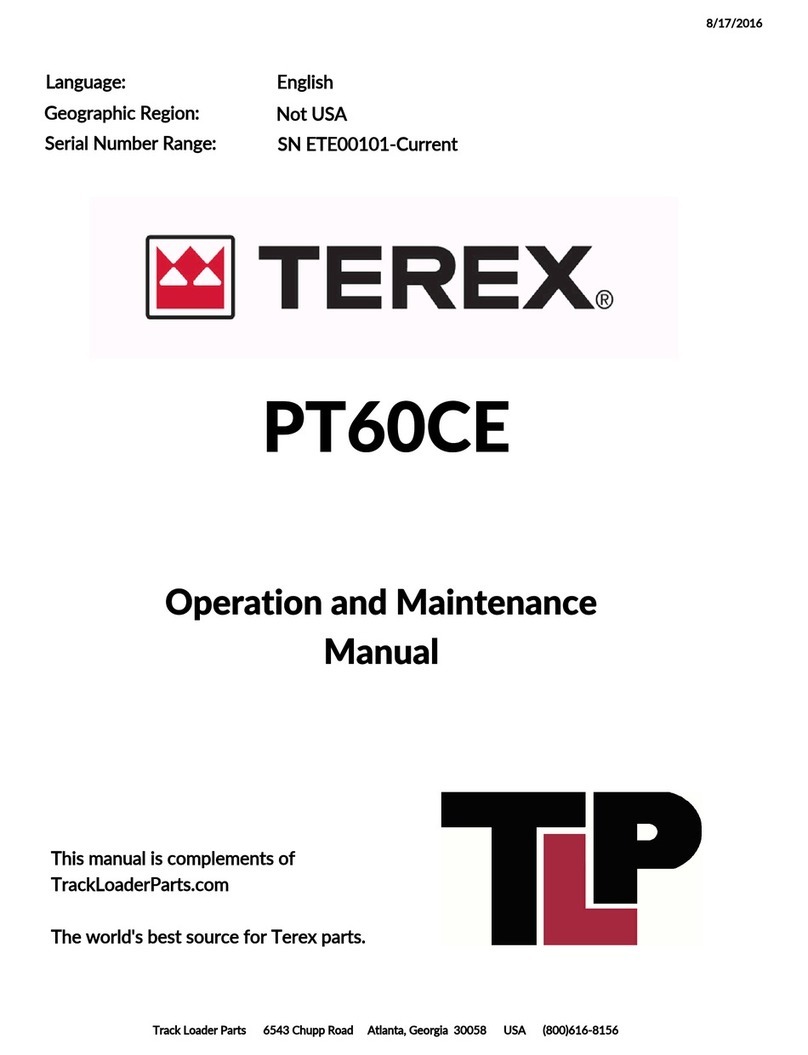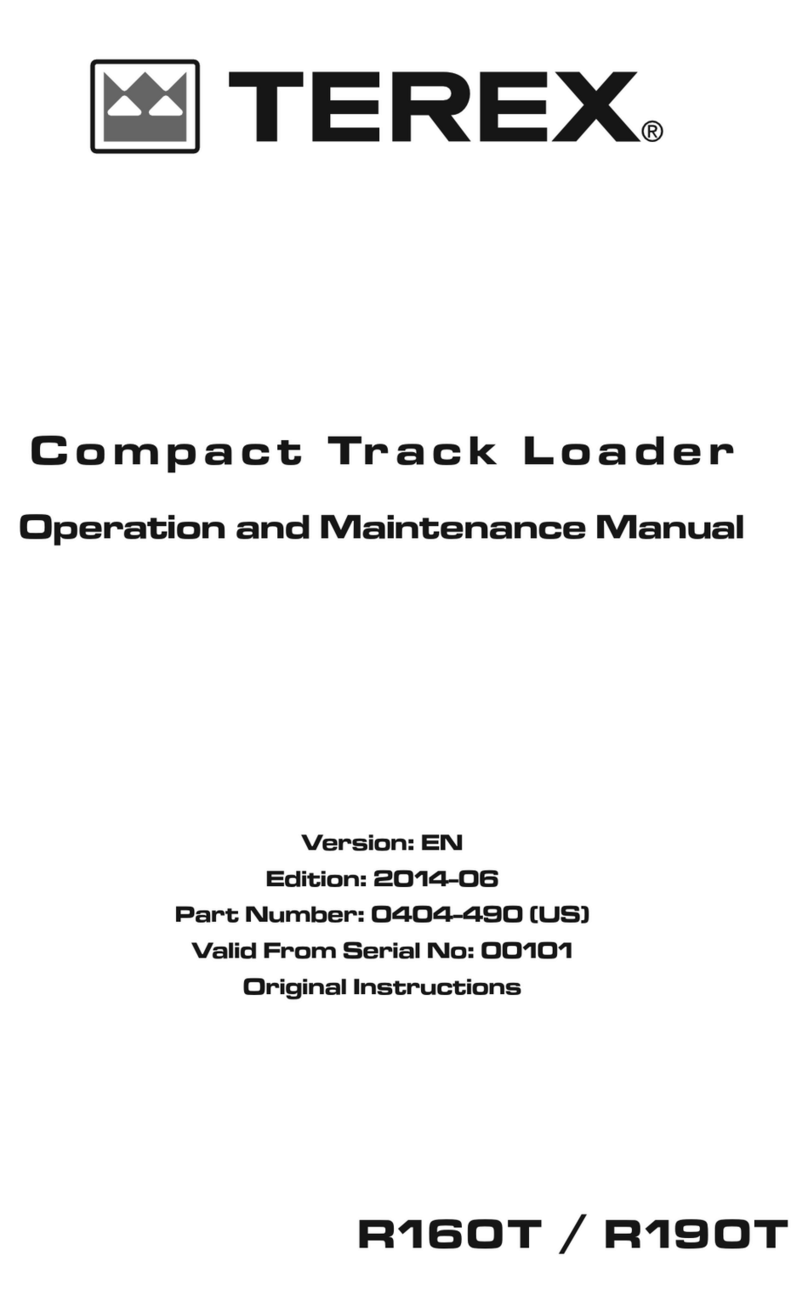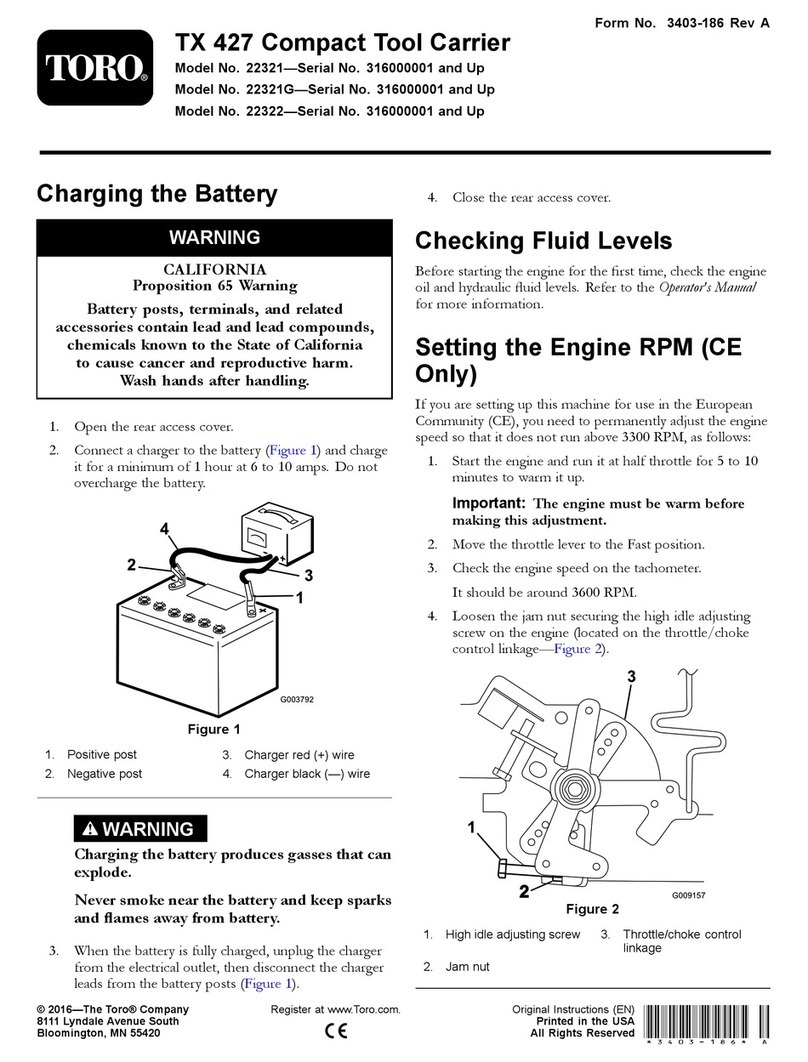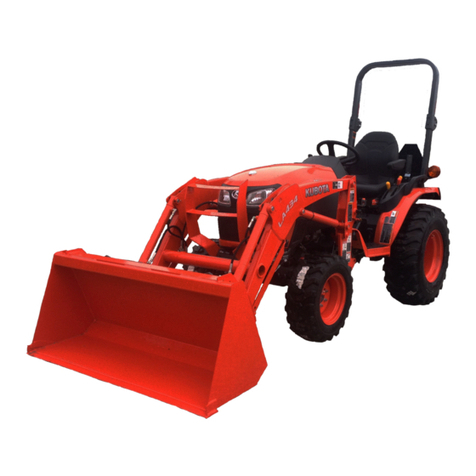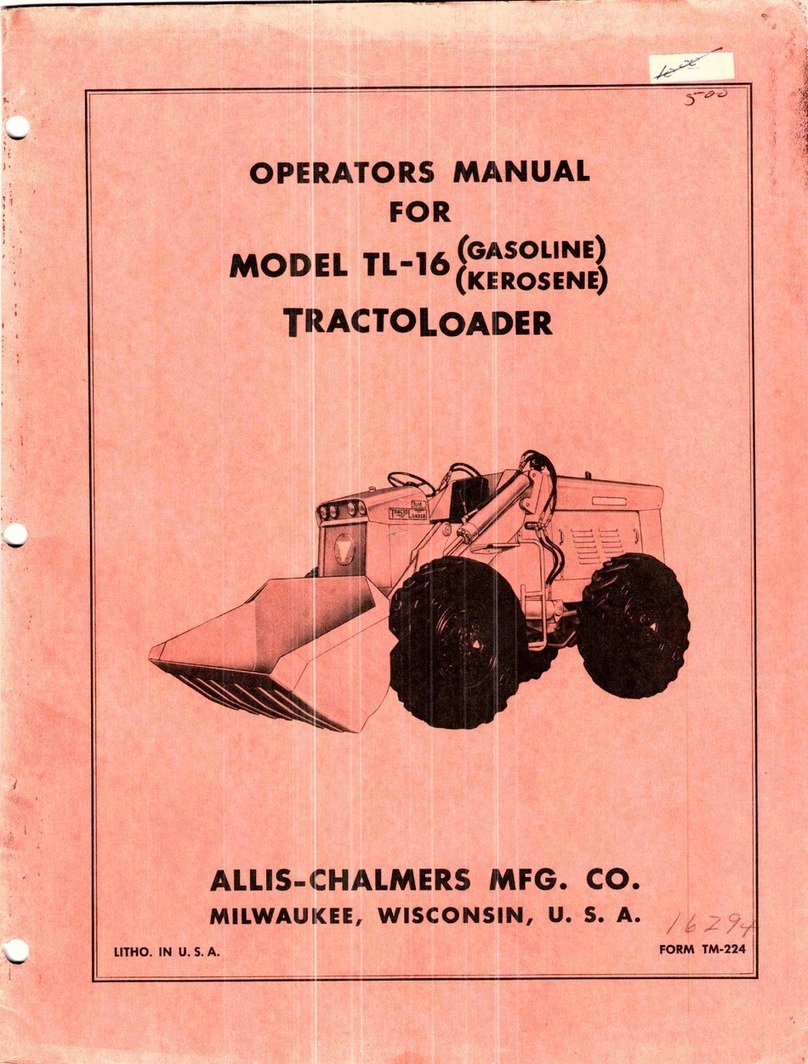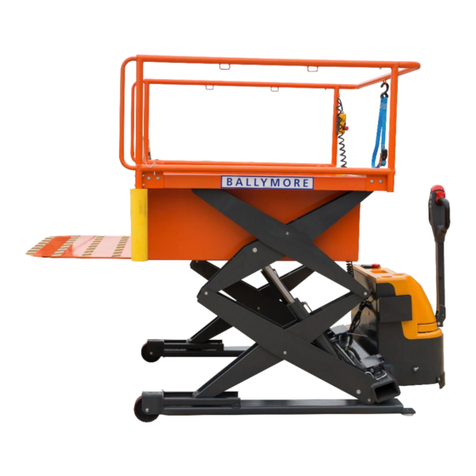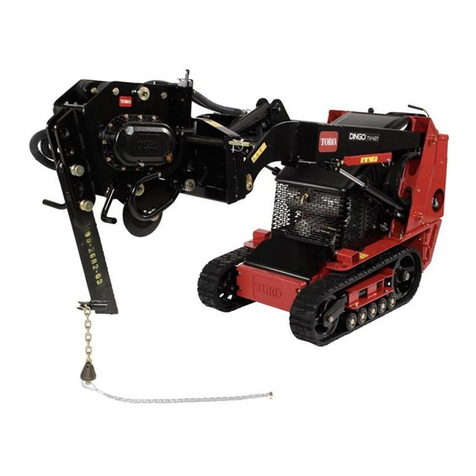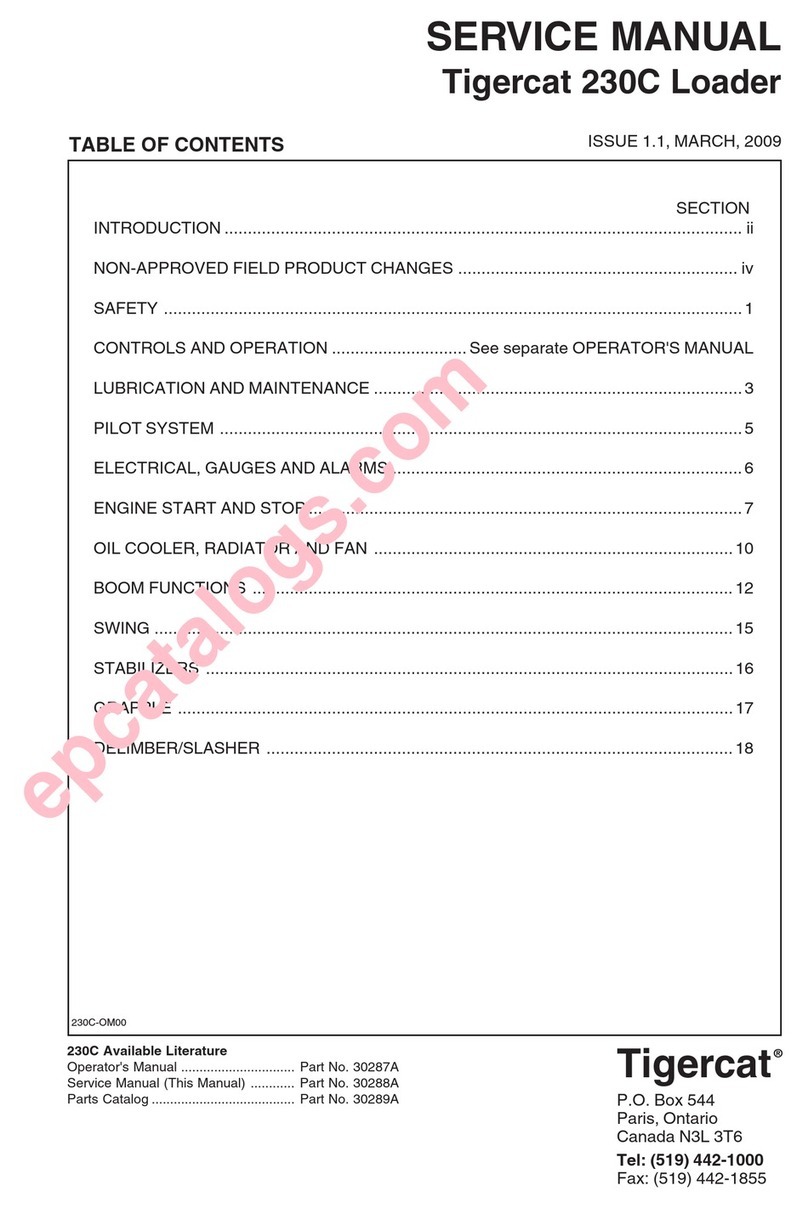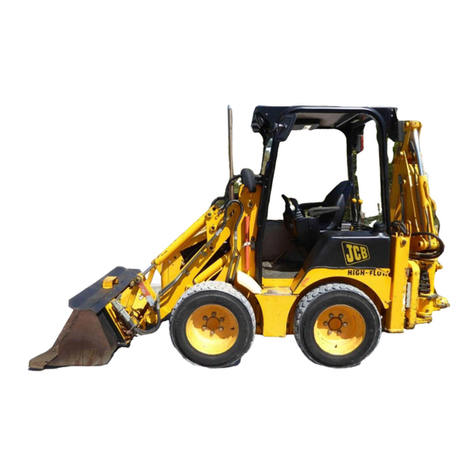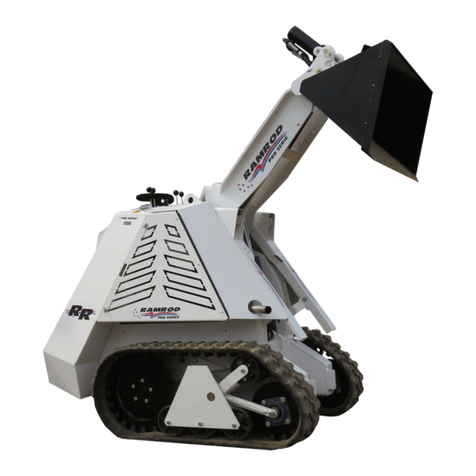1 INTRODUCTION
3
After installation of compatible (see section 4.13) special working attachments,
the equipment can be used for corresponding applications.
The operator must follow the enclosed operating instructions (manuals) for any
externally supplied components or attachments.
This machine can also be used for towing provided the specific operating
instructions found in the “towing” section of this manual are followed.
Any use varying from that described here or any lack of adherence to the operat-
ing instructions, maintenance procedures, or replacement intervals described in
this manual shall be regarded as unintended or improper use. The supplier cannot
be held responsible for any damage resulting from improper use. This risk is
borne solely by the user.
Note: Mulching type brush cutting attachments commonly used on this type of
machine may become unbalanced due to worn, damaged, or missing “teeth”,
causing vibration. If the attachment is operated in this condition, it can cause
metal fatigue and / or cracking in both the host machine and the attachment
itself. Vibration can also cause hydraulic component failure (ex: relief valves).
Mulching type brush cutters also generate more dust and flying debris than other
attachments. The increased particles can plug coolers, radiators, and air cleaners
much faster causing overheat or even engine failure if left unattended. The debris
can also be introduced into many high temperature areas and can become a fire
hazard. Debris should be cleaned frequently from these areas.
Although these mulching type heads work extremely well on Terex machines with
high flow hydraulics, educate yourself on the increased maintenance and operat-
ing costs before using this type of attachment.
1.5 Bulletin Compliance
It is very important to comply with all safety related bulletins. Bulletins are tied to
the most current owner on record. Therefore, it is important that any new owner
contact their local dealer to register the machine in their name. This will ensure
that they will be notified in the event of a safety related bulletin affecting their
machine.
1.6 Contacting the Manufacturer
If you have questions relating to ownership including, but not limited to: accident
reporting, current owner updates, product applications and safety, standards and
regulations compliance, product modifications, transfer of ownership, please
consult your local dealer as the first point of contact.
PT-110/PT-110F US O&M
2095-479 2013-02
